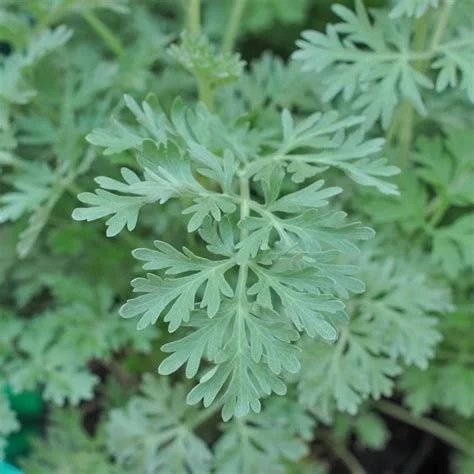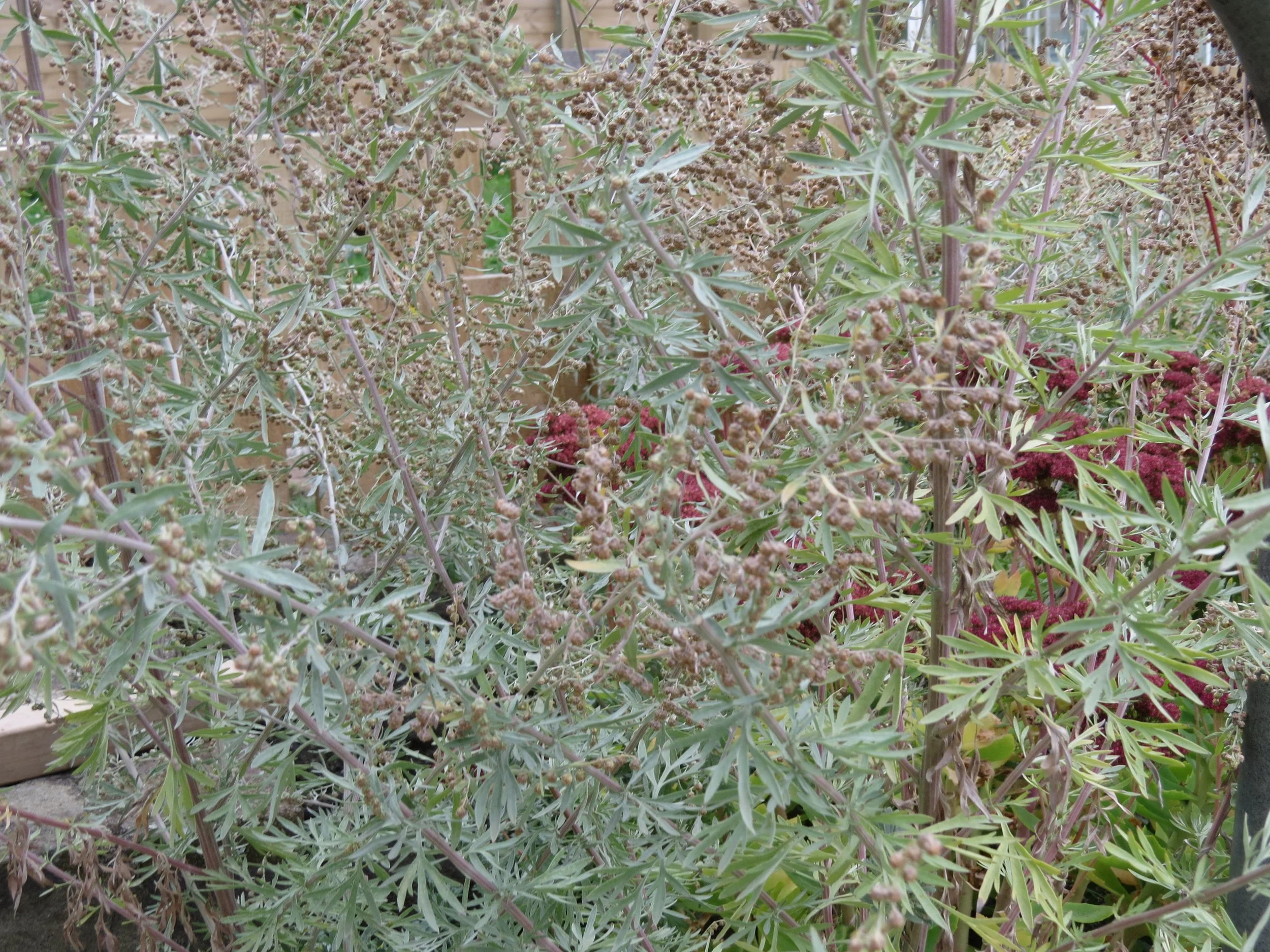Wormwood
Wormwood, Artemesia absinthium, is a close cousin of Artemesia annua (Sweet Annie). Although they have some similar actions, they are quite different.
Wormwood has feathery grey foliage and is a hardy herbaceous perennial. I chop it right back in winter and it grows as large as ever in summer. The flowers appear in mid-summer to autumn. It grows from cuttings or seed. I find it drought hardly (will need to be watered if it’s a prolonged dry spell) and it has always grown wherever I’ve planted in a garden. My kind of plant!
As the common name suggests, wormwood has anthelmintic or anti-parasitical action and it has been used in this way for milennia. It’s first recorded use is from 1552 BC, so it has quite a history of use.
The essential oil has been banned at times due to the belief that to its use in absinthe, the French liqueur, it causes central nervous system damage. This has been disproven after testing for levels of thujone in the essential oil. If used in excessive amounts it may cause nightmares, insomnia, vomiting and convulsions. It should be used for short term use and only in recommended amounts.
The scent is even bitter, in contrast to Sweet Annie’s aromatic sweet smell. Maybe this gives a hint of what wormwood is indicated for. Bitters are associated with the liver, as these are believed to stimulate the liver, bile and appetite. It has many uses for digestive support in addition to what I’ve mentioned including low HCl in the stomach, flatulence, indigestion, bloating and nausea, food sensitivities, Crohn’s and autoimmune diseases.
Caution: not to be used while pregnant, breastfeeding or if someone has a known allergy. Avoid with peptic ulcers or acid stomach. See your naturopath or medical herbalist for further advice.


